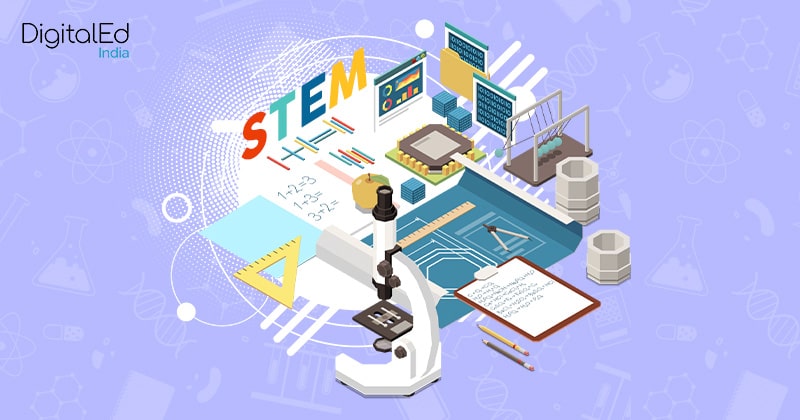Future of STEM Education: Where will STEM Education be in 5 years?

Over the next few decades, the job market is going to be dominated by automated systems. This will make the manual tasks redundant to a large extent. We are also going to witness a transformation in jobs. Several new jobs will be created, and that too, at a rapid pace. Industry research predicts a rise in demand for jobs in technical, scientific, and analytical sectors. Health services is another sector that expects to see a sharp increase in demand.
Considering the facts mentioned above and the requirement of the 21st century, children and professionals must be multi-talented and skilled in more than one field. Here, the concept of STEM education takes cognizance. STEM, a popular concept in western countries, stands for the integrated study of science, technology, engineering, and mathematics. This course enables students to be future-ready for a glorious career, immediately after finishing formal education.
Regardless of the endless opportunities and high-paying jobs offered to STEM graduates, only 16 percent of these students are proficient in what they have learned and are interested in pursuing a STEM career. On the contrary, the need for bright and intelligent STEM professionals is only going to rise in the coming times. The natural response to this issue would be to prioritize and improve STEM education efforts in the classroom.
We will now look at a few changes that are anticipated over the next 5 years to make a real difference in the quality of STEM education. These changes, as per the experts, would not only bring students into STEM education but also keep them interested throughout their education period and also as a professional. Technology is also crucial for teachers in order to develop courses and provide quality education to students.
- Coding is going to rule the education sector
To prepare our kids and students for STEM fields, the focus will shift towards programming literacy, fluency in computer science, and coding. Coding is important today, as reading and writing were in the mid-20th century. We need to make children familiar with coding, as they are with pen and paper. And all this can happen through hands-on experiences. However, widespread digital literacy may be tough, especially when it has not been a part of teacher’s education. The administration must provide schools with adequate resources to train teachers in coding before they go on to teach students.
- Convergence of education and entertainment
Today’s kids are digital-age kids. They are surrounded by technology and gadgets, day and night. Using these devices to teach STEM courses to children is a nice way to keep them engaged with studies and make it interesting also. It is important to relate the topics to their day-to-day experiences. Their life and education must not be different from each other. Gamification is one of the ways to make education interesting and engaging. With this, learning to code is a fun process for students. In the next 5 years, the field of education and learning will be transformed with the help of STEM courses.
- The journey from STEM to STEAM
Changing STEM into STEAM by integrating Arts with science, technology, engineering, and math is crucial for the success of students. It not only gives students a break from all technical subjects, but also increases their learning speed and understanding. It helps them think creatively about a problem. Several studies and research have shown that art and design subjects are helpful in fostering creative thinking among students by kindling their imaginative skills. Creative thinking is an important skill for all sectors be it theatre or organic chemistry.
In the coming five years, we must think about making STEM education increasingly creative and imaginative by incorporating art into STEM education. This is a very profound way of molding the upcoming generations of students into STEM professionals with an expanded vision and go-to attitude. This will shape our society with a new phase of the technological revolution. Equally important, however, is that teachers must be provided with adequate resources, technology, and timely training on basics like computer science, coding training, and the integration of art with STEM education, so that they can teach effectively.
Supporting teachers’ personal educational growth, in this way, will enable them to further integrate skills like coding and computer science into the classroom curriculum, which in turn will progress the development of programming literacy among students.
One Reply to “Future of STEM Education: Where will STEM Education be in 5 years?”
I agree with with what mentioned above .we will strive to get 21st century digital skills.